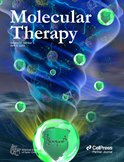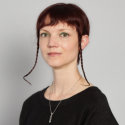Volume 12, Issue 4: April 2023
Editorial Team
Karen Bulaklak, PhD – Editor, The Vector
Jon Brudvig, PhD – Associate Editor, The Vector
Jessica Schneller, PhD – Junior Editor, The Vector
Inside This Issue
Leadership Message
Breaking Through
From Molecular Therapy
Society News
Career Center
Public Policy
Industry News
Leadership Message
Next Month: More Than Four Days of Science + Sunshine

Hello, ASGCT Members,
It’s hard to believe we’re just about a month away from the 26th Annual Meeting! I’m really looking forward to getting together with all of you on the West Coast and learning from a record-breaking 1,700+ abstracts of the latest CGT research. In addition to a large collection of abstracts, we’re excited to host new networking opportunities and a Career Fair, hear from experts like Nobel Prize winner Jennifer Doudna, PhD and other fantastic keynote speakers, and enjoy the Los Angeles sunshine. Secure your spot and register to attend in Los Angeles, or virtually. Remember that all in-person attendees can also watch the meeting virtually, and all registrants have access to the entire catalogue of sessions for 30 days following the event.
If you’d like to dive deeper into one of our seven workshop topics, add another half day to your registration and sign up for a workshop May 16. If it’s your first time attending the Annual Meeting and you’ll be in person, I highly recommend How to Make the Most of Your Annual Meeting Experience. Speakers at this workshop will help you expand your network while navigating a large scientific meeting, and there will be plenty of time for questions. We’ll continue to update the meeting program here if you’re interested in planning your schedule ahead of time.
Finally, it’s election season at ASGCT! If you’re a member or transitional member, you’re eligible to help us select the next leaders on our Board of Directors. We have a great group of candidates running this year! Make sure you read about them here and vote by April 26.
Sincerely,
Hans-Peter Kiem, MD, PhD
ASGCT President
Breaking Through
Obtaining the best igRNAs for bystander-less correction of all ABE-reversible pathogenic SNVs using high-throughput screening
Li B, Zhao D, Li Y, Yang Y, Zhu X, Li J, Bi C, Zhang X
DOI: https://doi.org/10.1016/j.ymthe.2023.01.028
Summary by Karen Bulaklak, PhD
Single nucleotide variants (SNVs), defined as single nucleotide changes in the DNA sequence, are the most common genetic variants and account for many disease-causing mutations. It is estimated that over 37,000 known diseases are associated with pathogenic SNVs1. Coupled with the targeting ability of CRISPR, the use of base editors is an attractive strategy for correcting SNVs because they can convert a single base pair without causing double-stranded breaks or utilizing a donor template for repair. Three types of base editors have been identified, including adenine base editors (ABEs), cytosine base editors (CBEs), and glycosylase base editors (GBEs). These convert A\T to G\C, G\C to A\T, and C\G to G\C, respectively. Approximately half of all human pathogenic SNVs are C\G to T\A changes, which are correctable by ABEs1. Still, an important concern is the occurrence of unwanted editing surrounding the target site, known as bystander editing. For ABEs, this can occur if additional adenines are present within or surrounding the editing window (positions 2-12 of the protospacer of the Cas9 gRNA). Avoiding regions with multiple adenines can limit the number of targetable mutations, potentially impeding gene therapy development for certain diseases. In a recent report, Li et al described a strategy for overcoming this hurdle for all ABE-amenable diseases.
To address the bystander editing, Li et al pulled from their previous work, taking advantage of their imperfect gRNA (igRNA) approach. They previously designed igRNAs with mismatches at positions 2-5 in the protospacer and found that these changes improved base editing outcomes. With this strategy in hand, the group expanded their scope and aimed to find a way to target all ABE-amenable SNVs. The group performed a high-throughput screen where they generated multiple igRNAs for more than 5,000 disease-associated targets. The igRNAs followed the design parameters from their previous work, but the group also expanded the base changes to positions 6-9 of the protospacer and incorporated igRNAs with insertions or deletions. After conducting the screen, their analyses identified over 1,000 SNVs where only the target A was edited with an efficiency of >50%, with hundreds achieving an efficiency of 80% to 100%. In addition, they found that specific base editing for >1,500 sites increased using an igRNA vs. the original gRNA designed against the exact target sequence. Overall, bystander editing was vastly reduced using the igRNAs. They observed that 76% of the SNV loci exhibiting bystander editing with the original gRNA was eliminated with the use of igRNAs. Thus, the group achieved more efficient and specific base editing using igRNAs for disease-associated SNV, including pathogenic SNVs associated with as primary hyperoxaluria type 1, neurodegeneration, and Fabry disease.
The work by Li et al provides a valuable resource not just for the development of ABE-based gene therapies, but for creating guidelines for gRNA design when using ABEs. Efforts like this can help to expedite therapeutic development for patients while contributing valuable knowledge to the field.
From Molecular Therapy
 Special issue call for papers: Biomanufacturing in gene and cell therapy
Special issue call for papers: Biomanufacturing in gene and cell therapy
Submit to a special issue of Molecular Therapy—Methods and Clinical Development by May 31! The issue will be dedicated to all aspects of preclinical and clinical manufacturing of gene and cell therapy products. Learn more and submit today!
Latest MT issues: Check out the most recent issues of these Molecular Therapy family journals:
Society News
Vote through April 26 to Select Five New Leaders on the Board
If you're a member or transitinal member of ASGCT, you're eligible to vote in the 2023 Election! We need your help to select five new members of the ASGCT Board of Directors who will take office June 1. Read more about the slate of candidates running for election and vote by Apri 26.
Join Us at the Gene Therapy Patient Engagement Summit in June
The 3rd Annual Gene Therapy Engagement Summit, which will feature talks, workshops, and group discussions, will unite patient advocacy and engagement experts from gene therapy drug developers with patient organizations. It will take place in Boston June 13-15. ASGCT’s Senior Outreach Manager Ali Kujawski, MPH, will give a talk on the “101 of Creating Gene Therapy Resources” on the morning of June 14. Learn more and register here.
Register for Free April Events
Check out these three upcoming events and register now.
Career Center
Are you looking for a job in the field of gene and cell therapy? Check out the new ASGCT Career Center for great opportunities with industry, government, and academic organizations. Sign up to receive alerts for open jobs in your area.
If you're from a recruiting institution, advertise in the Featured Jobs section to target the 5,000+ audience of The Vector.

Featured Jobs
Public Policy
Bipartisan Legislators, ASGCT Discuss GCT for Sickle Cell Disease
The Society met in person and virtually with a bipartisan selection of legislators in the U.S. House of Representatives and U.S. Senate to discuss the development and approval of gene and cell therapies for sickle cell disease (SCD). During these meetings, ASGCT's experts highlighted the basics of gene and cell therapy science as well as the genetic approaches being developed for SCD. They also discussed the costs and equity issues that SCD patients currently face with existing therapies and the policy options available to address those challenges and support patient access once an SCD gene therapy is approved.
ASGCT’s core mission is to advance the science of gene and cell therapies and ensure they can be accessed by patients. Our members are at the forefront of many developments in the field, and this spring the Society is connecting them with members of Congress and their staff. When policymakers hear directly from the experts, they're better prepared to make informed decisions in the future. ASGCT is honored to be a trusted source of scientific knowledge and clinical development insight.
The Society appreciates our members and colleagues who joined these conversations and lent their expertise:
-
Dr. Hans-Peter Kiem, ASGCT President + Director, Stem Cell and Gene Therapy Program, Clinical Research Division, Fred Hutch Cancer Center
-
Dr. Andrew Campbell, Director, Comprehensive Sickle Cell Disease Program, Children's National Hospital
-
Dr. Punam Malik, Marjory J Johnson Chair of Gene and Cell Therapy, Cincinnati Children's Hospital Medical Center
-
Scott McGoohan, Senior Director of Policy and Alliance Development for Exa-cel, Vertex Pharmaceuticals
-
Dr. Matt Porteus, Sutardja Chuk Professor of Definitive and Curative Medicine, Stanford Medical School
Watch Now: First Science Series with BIO Features Dr. Lauriel Earley
The Society partnered with the Biotechnology Innovation Organization (BIO) to host the Cell and Gene Therapy (CGT) Science Series, a quarterly seminar series focused on scientific topics related to cell and gene therapy products. The CGT Science Series is intended to foster scientific exchange between BIO, ASGCT, and the Center for Biologics Evaluation and Research (CBER) review staff on a variety of topics that span the CGT product lifecycle.
 The inaugural seminar took place at the end of March and focused on the techniques of characterization of AAV products. Lauriel Earley, PhD, a senior scientist with Shape Therapeutics, presented on Short and Long Read Sequencing for AAV Characterization.
The inaugural seminar took place at the end of March and focused on the techniques of characterization of AAV products. Lauriel Earley, PhD, a senior scientist with Shape Therapeutics, presented on Short and Long Read Sequencing for AAV Characterization.
Dr. Earley has been studying the basic biology of adeno-associated virus for over decade. During her graduate studies at Oregon Health & Science University, she examined the role of assembly-activating protein under the mentorship of Dr. Hiroyuki Nakai. After receiving her PhD, she joined Dr. Jude Samulski's laboratory at the University of North Carolina, Chapel Hill and took on a project to characterize the intrinsic promoter ability of the inverted terminal repeat sequences from various AAV serotypes. Dr. Earley joined Shape Therapeutics in 2019 and is currently leading their vector platform development team. In addition, Dr. Earley has been an active member of ASGCT since 2012 and is currently serving on the Patient Outreach Committee.
ARPA-H Announces New Programs and Funding Opportunities
The Advanced Projects Research Agency for Health (ARPA-H) has announced specifics on several new initiatives aimed at accelerating better health outcomes. The new agency has released information on funding opportunities, site selection, and an idea competition called the “APRA-H Dash.” This announcement followed President Biden’s budget request, which called for additional funding for ARPA-H, among other priorities.
The Agency has launched its first open Broad Agency Announcement (BAA) seeking innovative proposals that aim to enhance health outcomes across various patient populations, diseases, and communities. The BAA solicits proposals for cutting-edge research and technological advancements, with an emphasis on unconventional approaches and challenging accepted assumptions. ARPA-H has also launched ARPA-H Dash, an online competition to identify revolutionary evidence-based ideas to transform health. The competition is open to bold thinkers across the health and scientific communities, using a bracket format and online discussion, debate, and voting to crown one champion idea.
ARPA-H Director Dr. Renee Wegrzyn (who in a prior role spoke at ASGCT’s 2020 Policy Summit) has highlighted gene and cell therapies as one of the transformative avenues for her agency to explore. ASGCT looks forward to the new research and discovery opportunities the Agency can facilitate.
Industry News
Interested in advertising in The Vector?
View the Rate Sheet